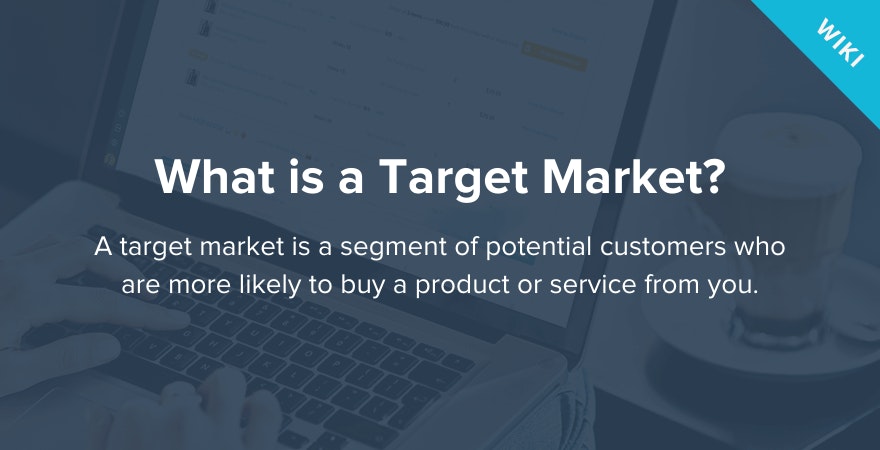
Target Market

Don’t wait for someone else to do it. Hire yourself and start calling the shots.
Get Started FreeWhat is a Target Market?
A target market is a segment of potential customers who are more likely to buy a product or service from you. This target market could be based on geography, demographics, psychographics, or other defining features. A target market is essential in successful marketing campaigns as it describes the type of people you want to single out.
Defining Target Markets
Target markets can be hard to define without doing some research first. Once you have chosen a product or service to sell you can look at your competitors and unearth who their target market is. Sometimes it can be easy to figure out due to language, imagery or the company defines their market publicly. Other times it is not clear if there is a target market for a product. For example, it is assumed that Lego’s target market is children between 2-12 years old but they also talk to older kids and adults who want to experience the naivety of childhood again. So it is hard to understand a target market when companies don’t make it clear.
Defining your target market can be easier though. There are many places to find information on your potential target audience.
- Online Research:
You can look at people who previously purchased your product or talked about it online. Search social media for mentions of your brand or competitors and profile those who are talking about you. If they speak in a negative light find out why and refrain from talking about that. - Analytics:
Check your analytics data to find out the age, target demographics, geographics, etc to build a better persona of your target audience. Google Analytics is a free tool which will collect this information for you. - Focus Groups:
Conduct focus groups with cohorts of people who you think will enjoy your product and ask them hard-hitting questions that will inform you of the key traits of your target market.
Target Market Segmentation
Once you have defined your target market you may find that it is too broad to create a targeted marketing campaign or product description to entice as many sales as possible. This is where you would segment your target market into sections based on one or more particular attributes. The most popular sectionings are age or geography. Using age, marketing collateral can be broken into different messages based on the solution a product solves for this audience segment. Other target market segmentation includes, but are not limited to:
- Relationship Status
- Interests
- Buyer Behaviour
- Technology
- Income
- Education
- Profession
Target Market Examples
There are four categories that a target market normally fits into. These four categories are a mixture of broad and limiting attributes that can be part of a profile. Not all of them are important to include in a target market profile, sometimes it is okay to only use one category.
Geographic
A product or service might only appeal to a target market in a small geographic area so the is no point in creating content outside of this language, value set, and location. A geographic target market example is the postal services for any country. Normally the only people using these services are living within the country, therefore, it is not important to create in-depth content in different languages.
Demographic
Target demographic data revolves around personal information including age, education, income, gender, relationship status, etc. This information can be important when choosing your target market as it could outline how important the product is to a person, or what price they can afford to pay for it. A demographic target market example is Starbucks customers who are between the ages of 25-44 who are high earners (above $80k in the US).
Psychographic
Psychographics are qualitative human characteristics (opinions, behaviors, and attitudes) that help to identify more about a person than just demographics. Our opinions can be something as simple as whether we like warm or cold weather, or as complex as our political affiliation. Our interests can be broad like indoor sports or niche like collecting decorative soaps. And our activities can be as straightforward as fitness or elaborate as plane spotting. A psychographic target market example is creating targeted advertising for new djaying software to people interested in djaying.
Behavioristic
This final category is based around understanding buying behavior to comprehend if a customer will buy from you. This would include knowing what brands a customer hold loyal, how much money they are willing to pay for items similar to yours, and how often they buy items like yours. These attributes are important to know as even if a target market includes highly informed target demographic information, if they have brand loyalty towards your competitor, or if they only buy a luxury product like yours once a year, it may be hard to target them no matter how hard you try.